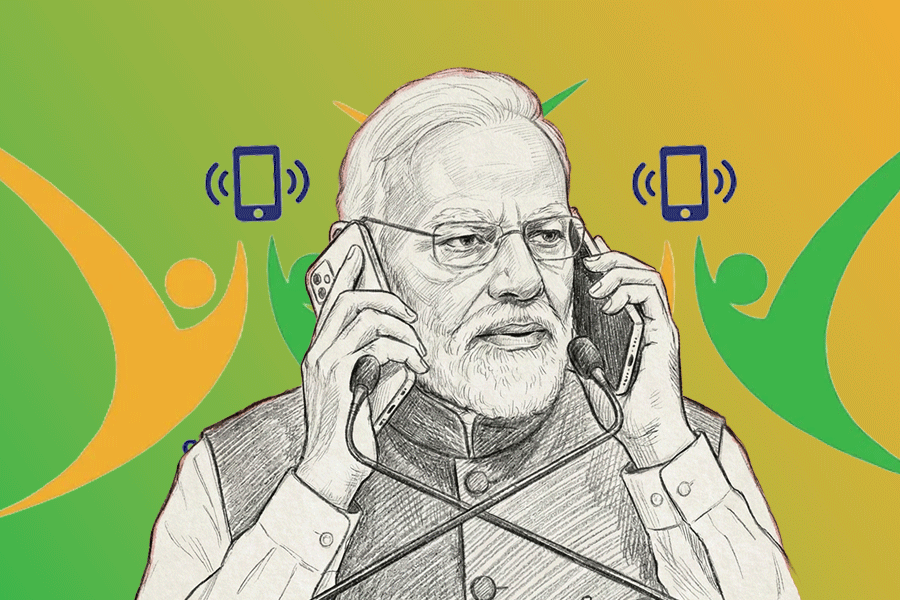|
|
| Listen carefully |
I was not aware that Sikhs had any historical connection with the Jains. Their religions have very little in common. Jainism is basically atheistic, with a rigid ethical code requiring respect for all forms of life. Jains are strict vegetarians and spartan, and they extol the virtue of starving oneself to death to attain moksha. Sikhism, on the other hand, believes in one god, its ten Gurus and its scripture, the Granth Sahib. It exhorts its followers to work hard, share one’s earnings and lead a fulfilled life. Most Sikhs are meat-eaters and decry vegetarians as daal khorey (lentil-eaters). Nevertheless, there were some eminent Jains who admired the Sikh Gurus and came to their help in difficult times. I am beholden to Mahendar Kumar Mast of Panchkula for information on this subject.
When the ninth Sikh Guru, Tegh Bahadur, was on his preaching mission in east India, he and his family were invited by Salis Rai Johri to stay in his haveli in Patna. In his hukamnamas sent from Assam, the Guru Sahib referred to Patna as guru-ka-ghar — home of the Guru. Salis Rai donated half of his haveli to build a gurdwara, Janam Sthaan, because Guru Gobind Singh was born there. On the other half, he built a Shvetambar Jain Temple — both have a common wall.
Diwan Todar Mal was an Oswal Jain who rose to become the diwan in the court of Nawab Wazir Khan of Sirhind. When the nawab had Guru Gobind Singh’s two younger sons put to death, it was Todar Mal who conveyed the sad news to their grand mother — who died of shock — and had the three bodies cremated. On the site of the cremation at Fatehgarh Sahib now stands the Gurdwara Jyoti Sarup. A large hall of this gurdwara honours the builder by being named after him — Diwan Todar Mal Jain Yadagiri Hall.
Stapler mania
I suffer from a mild disease, which I can only describe as stapler allergy. No sooner I get a letter with stapler pins punched in it, than my temperature begins to rise.
At times, I am tempted to throw it in the grate, which I use as a waste-paper basket in summer and as a fireplace during cold winter evenings. But I hold my hand, lest the envelope contains a cheque. Since some envelopes have many pins stapled on them, I have to be very careful while opening such letters. More than once, I have cut my fingers, and have had drops of blood oozing from them.
It appears that stapler fixation is peculiar to Indians. I receive quite a lot of foreign mail. Not one country — not even Pakistan or Bangladesh — suffer from the fetish of punching stapler pins in their letters that are not necessary at all. We, Indians, continue to engage in this pointless exercise without giving it a second thought.
Government departments, industrial houses, banks, even the humblest citizens, believe that a letter is not safe unless it has been stapled. It is time we cure ourselves of this disease. Gum seals an envelope effectively.
Party songs
L.K. Advani — Dost dost na raha...
A.B. Vajpayee — Sajan re jhoot mat bolo...
Jaswant Singh — Mere dushman tu meri dosti ko tarse...
Rajnath Singh — Jayen to jayen kahan...
Mohan Bhagwat — Aanewale ko aana hoga/ Jaanewale ko jaana hoga...
Yashwant Sinha — Yeh mera prem patr padh kar...
Arun Shourie — Likhey jo khat tujhey...
Sushma Swaraj — Aap ki nazron ney samjha...
Arun Jaitley — Tere mere sapne ab ek rang hain...
Ananth Kumar — Jo tum ko ho pasand...
Venkaiah Naidu — Hamey tum se pyar kitna...
Murli Manohar Joshi — Abhi to main jawan hoon...
Brajesh Mishra — Lo bhooli daastaan phir yaad agayee...
(Contributed by K.J.S. Ahluwalia, Amritsar)
On a high
An old tea-planter was a hard drinker. His hobby was cooking. He used to prepare some chicken items, which were very tasty and delicious.
One of his young colleagues took some recipes from his senior that were neatly typed. Leafing through the pages, he found that each recipe started out in the same fashion: “First, pour three to four dollops of whiskey into the cook.”
(Contributed by Reeten Ganguly, Tezpur)











